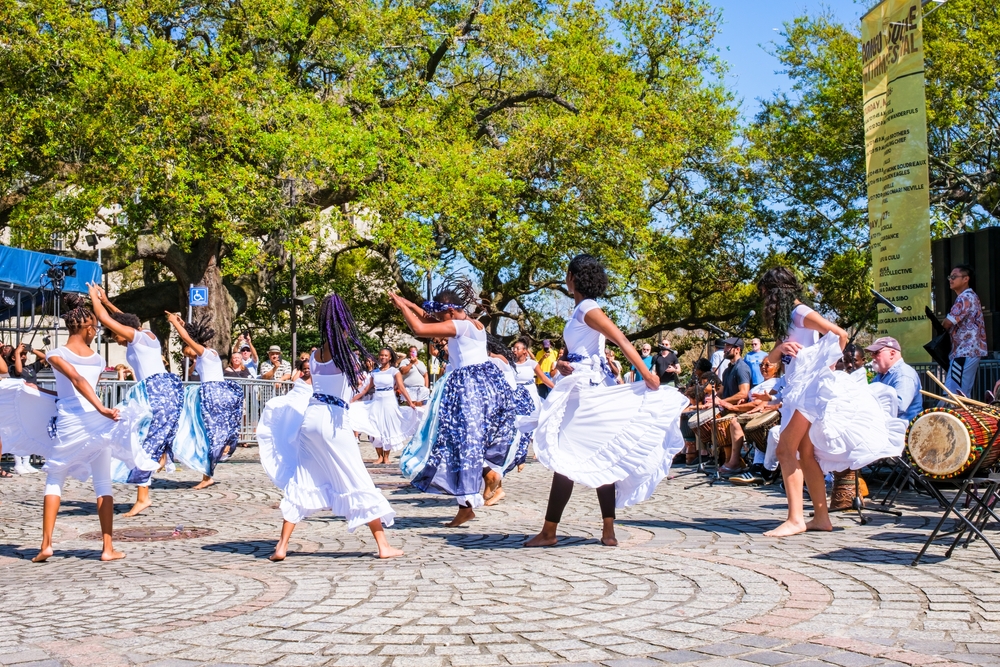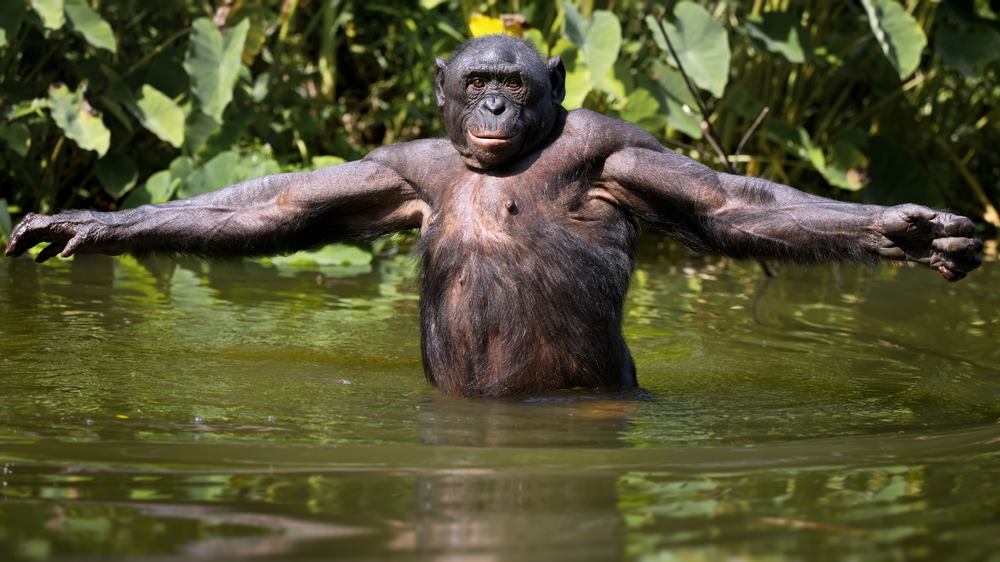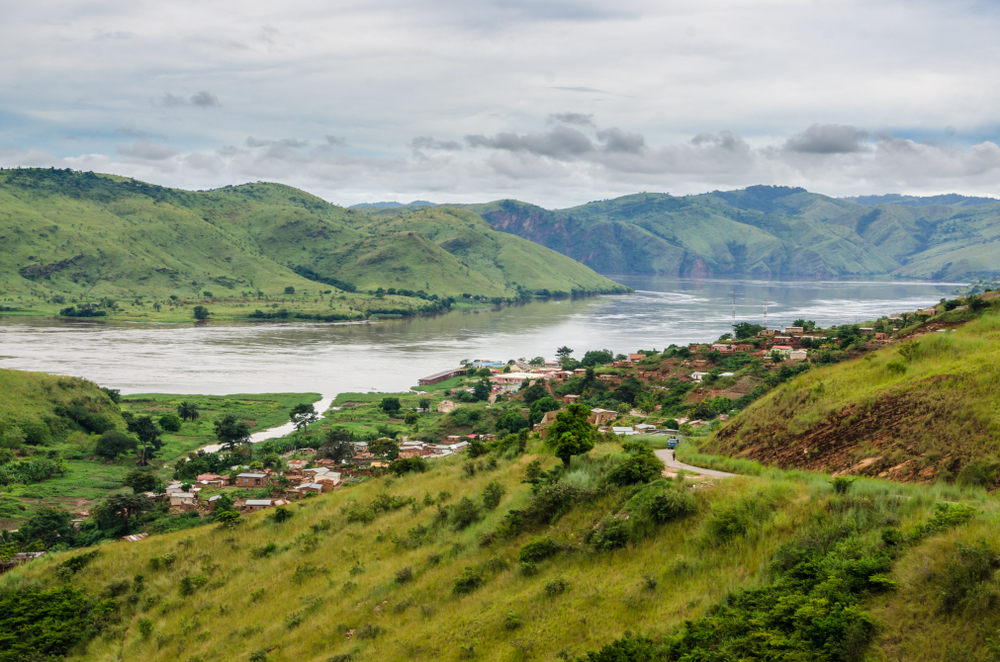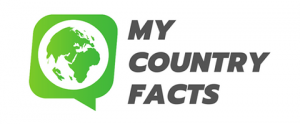Have negative images of the Democratic Republic of Congo as a country of Ebola and civil wars? These interesting fun facts will make you change your perception of the country.
If your travel bucket list features no African country, here’s why Congo should be the next country you visit.
1. DRC Is Africa’s Second Largest Country
At 2,344,858 million square kilometers (905,355 square miles), the Democratic Republic of the Congo (DRC) is the second largest country in Africa after Algeria (2,381,741 million kilometers/919,595 square miles).
To put Congo’s massive size into perspective, its area is about three times larger than Turkey and about 3.5 times larger than Texas.
The central African country shares a border with nine countries, including Zambia, Tanzania, South Sudan, Angola, the Republic of the Congo (Congo-Brazzaville), Burundi, Uganda, Rwanda, and the Central African Republic.
The majestic Congo also borders the Atlantic Ocean along a 25-mile coastline.
2. The World’s Second Largest French-speaking city
The capital city of the DRC, Kinshasa, is home to about 15,628,085 people in 2022. It is now labeled the world’s largest French-speaking city, with about 12.8 million French speakers.
As early as 2015, reports indicated that Kinshasa had graduated from the second-largest French-speaking city in the world to the first position, having dethroned Paris.
3. Over 200 Ethnic Groups Reside In The DRC
Given its large size, the DRC is home to over 200 ethnic groups, making it one of Africa’s most ethnically diverse countries, including Nigeria.
Congo’s diverse tribes speak about 250 dialects and languages. The country’s official language is French, while the four recognized national languages are Swahili, Tshiluba, Lingala, and Kikongo (Kituba).
4. The Land Of Music Exports
Music is one of Congo’s most significant exports! Congolese music has risen since the 1930s to become the most influential, dynamic, and prolific in Africa.
From the famous Congolese rumba and Ndombolo to the Lingala and Soukous, there is no shortage of Congolese music in different African countries and worldwide.

Most nightclubs in Kenyan cities like Nairobi wouldn’t be complete without blasting the ever-adorable music of Congolese musicians like Werrason, Koffi Olomide, Fally Ipupa, and Ferre Gola.
My all-time favorite Congolese singers remain Franco Luambo, Madilu System, Samba Mpangala, M’bilia Bel, and Papa Noel. Hardly a day goes by without their timeless music blasting through my systems!
5. Africa’s Oldest National Park
The Virunga National Park in the Democratic Republic of Congo is the oldest national park in Africa.
The park hosts lions, forest elephants, rare mountain gorillas, hippopotamuses, antelopes, pelicans, warthogs, okapis, and eastern lowland gorillas.
6. The World’s Richest Country…
DR Congo is the richest country in the world but only in terms of natural resources! The country teems with minerals like gold, tin, uranium, copper, tungsten, cobalt, and tantalum.
The DRC also boasts large tracts of arable land, the second-largest rainforest on Earth (Congo rainforest), unrivaled flora and fauna biodiversity, and hydroelectricity potential.
7. Among The World’s Five Poorest Nations…
Despite being endowed with vast natural resources, they are seen as a curse more than a blessing, given that the Congolese have been fighting for ages for control of their resources. The country ranks among the five poorest countries in the world.
Political instability, the 2003 Congo Wars, corruption, and perpetual internal conflict have led to the mismanagement and underutilization of the DRC’s resources.
But things are looking up now, and there is hope that the country will soon rise from the ashes and take its rightful place at the world dinner table!
8. The Bonobos Are Natively Only To The DRC
Also called the pygmy chimpanzees, the bonobos are one of the great ape species closest to humans. They share nearly 99% of human DNA and are known for their empathy and intelligence.

The bonobos are endemic to Congo and are usually called the Make Love, Not War primates because of their diverse sexual activities.
The sexual encounters of the bonobos aren’t only for reproduction but also for conflict resolution, playing, social bonding, reprimanding, pleasure, and greetings.
9. The Congo Isn’t Ebola-laden
Contrary to what many people believe, the Democratic Republic of Congo isn’t bedridden with Ebola.
The last outbreak of the disease was announced on 4th July 2022 and has since been contained, as every other outbreak has since 1976 when the Ebola virus was discovered in the country for the first time.
10. Uranium For WWII Atomic Bombs Came From Congo
Congo’s contribution to the second world war in Manhattan came in the form of uranium for making atomic tombs, given the country’s richness of uranium.
The Shinkolobwe uranium mines in Katanga were closed down officially in 2004. However, private Congolese miners still try to find their own uranium to earn a living.
11. The World’s Deepest River Runs Through Congo
The Congo River that runs between the Democratic Republic of Congo and the Republic of Congo is the deepest river in the world at 220 meters (720 feet), which is too deep for substantial light penetration!
The Congo River is the second longest River in Africa at about 4,700 kilometers (2,920 miles) after the Nile. The Congo Canyon, found at the mouth of the Congo River, is one of the world’s largest submarine canyons.

In addition, the Congo basin formed by the Congo River is the second largest river basin in the world at 3.4 square kilometers (1.3 million square miles) after the mighty Amazon basin.
12. Zaire, The River That Swallows All Rivers
After Congo gained its independence from Belgium in 1960, Mobutu Sese Seko Kuku Ngbendu Wa Za Banga became the president of the resource-rich country in central Africa in 1965 after a coup.
President Mobutu changed the country’s name to the Republic of Zaïre from 1971 to 1997 to reflect the Africanness of the country.
The name Zaïre (Zaire in Portuguese) is derived from the Kongo word nzadi or nzere, for the Congo River, meaning the “river that swallows all rivers”.
President Kabila changed the name to the Democratic Republic of Congo after successfully overthrowing Mobutu Sese Seko in 1997.
13. Congo Basin Has 9 UNESCO World Heritage Sites
The Congo Basin has nine sites on the UNESCO World Heritage Sites list. The sites are found in five states, including the Republic of the Congo, Cameroon, Gabon, Congo, and the Central African Republic.
The nine natural Congo Basin World Heritage Sites include:
- Ivindo National Park
- Salonga National Park
- Virunga National Park
- Ecosystem and Relict Cultural Landscape of Lopè-Okanda
- Dja Faunal Reserve
- Sangha Trinational
- Garamba National Park
- Okapi Wildlife Reserve
- Kahuzi-Biega National Park
14. Congolese Rumba Is Now A UNESCO World Heritage
Congolese rumba won the UNESCO World Heritage status in 2021 to join UNESCO’s intangible heritage list!
Other famous living heritage or intangible cultural heritage additions to the list include Jamaican reggae music, Cuban rumba, and Singaporean food hawker culture.

